In my second of three posts about Reverend Howard Finster I’ll talk about his work and show what I photographed on my visit to his museum and gallery. The first post was about the cozy Air BnB I stayed in across the street from his museum and garden in Summerville, Georgia. Our timing for writing about this artist is the upcoming festival know as “Finster Fest” that will be held in a few weeks. Howard Finster was a self-taught or outsider artist. Outsider artists are typically those that have no art training and exist outside the mainstream art world. Fantasy, unconventional ideas, and at times extreme mental stress can be found in their art. In his case, he started with an outsider’s viewpoint and moved into sacred art later in life.
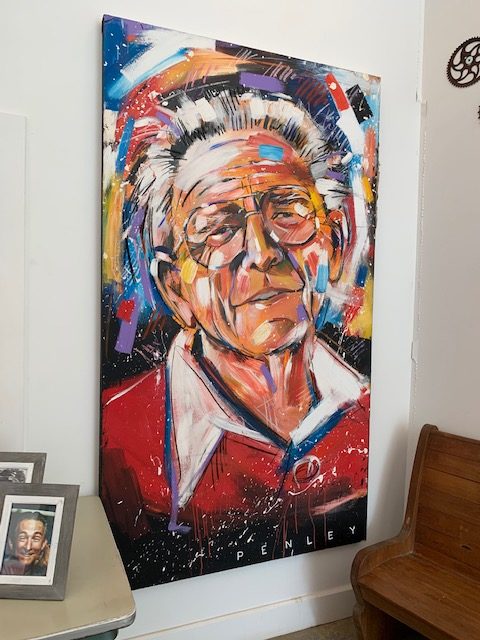
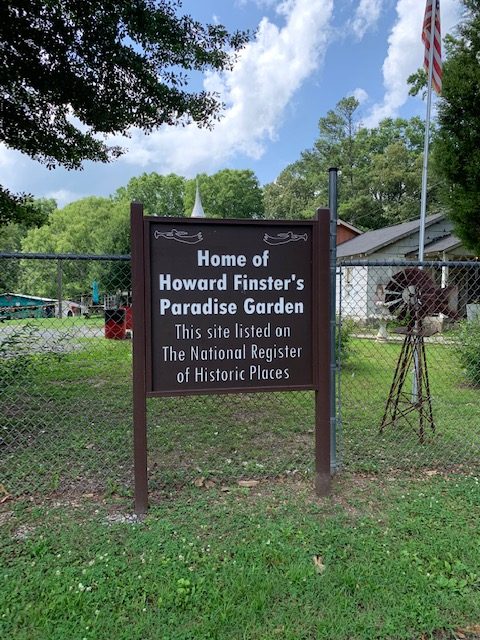
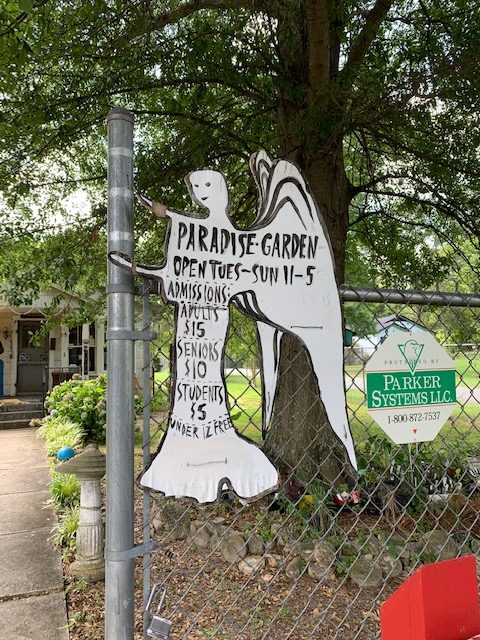
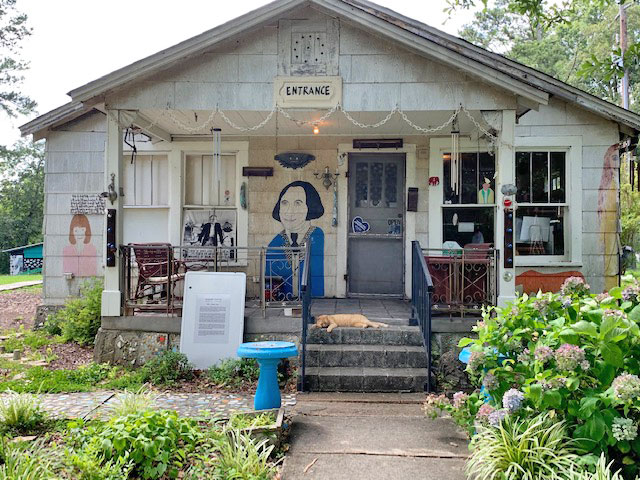
Finster was born in rural Alabama in 1961. At the age of 3, he saw a vision of his deceased sister who told him that he’d be “a man of visions”. He went to school through the 6th grade and was a born again Christian at 13 years old. By the time he was 16, he was preaching at revivals in the south. He would stand up on cars to call out to the crowds. He used his art as a way to spread the gospel to people. In 1965, he retired from preaching. Inspired by a vision in 1976, he began creating sacred art. Here’s a biography of his work from the Paradise Garden Foundation site:
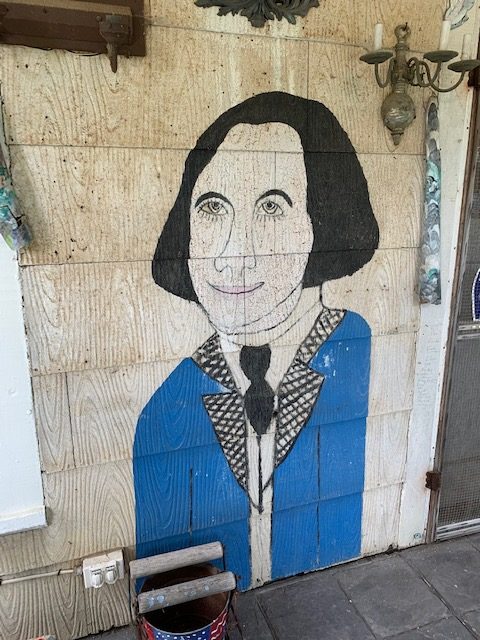
The Man of Vision
Reverend Howard Finster, a self-proclaimed “Man of Visions”, Finster was one of America’s most widely known and prolific self-taught artists producing over 46,991 pieces of art before his death in 2001. He saw himself as a sacred artist, tirelessly recording his visionary prophesies and providing glimpses of a celestial outer space world that God revealed to him. These visionary journeys were very real for Finster, providing a limitless variety of images for his creative endeavors.
Born in rural Alabama in 1916, Finster went on to become a preacher, tent revivalist, and “master of 22 different trades” before building his roadside tribute to inventors the Plant Farm Museum. Later dubbed “Paradise Garden,” this rock and junk encrusted wonderland became the focus of Finster’s life work. In 1976, however, this focus shifted. As he was using his fingers to apply paint to a refurbished bicycle, Finster noticed that the paint smudge on the tip of his finger had formed a human face. A voice spoke to him, saying, “paint sacred art.” Finster began churning out thousands of sermon-laden artworks with subjects ranging from historical characters and popular culture icons like Elvis Presley to evangelistic fantasy landscapes and futuristic cities. Most works are meticulously coated in Finster’s own hand-lettered words and Biblical verse.
To spread his vision to a wider audience, Finster designed record album covers for rock groups such as R.E.M. and Talking Heads, later earning him Record Album Cover of the year by Rolling Stone Magazine. Interviews, films, and his famous appearance on The Tonight Show with Johnny Carson further advanced his evangelical message. Finster’s preaching experience and his showman-like personality helped to shape his public persona and ever-increasing celebrity. The industry that surrounded Finster’s name ended up defining his final years. Finster’s intentions remained true to his inner voice—to make sacred art. Well-known and often misunderstood, his position is suspended somewhere between awe for his tireless, faith-driven creativity and his esteemed place in the pantheon of contemporary American art. He has been called both “the grandfather of Southern Folk Art” and “the Andy Warhol of the South.”
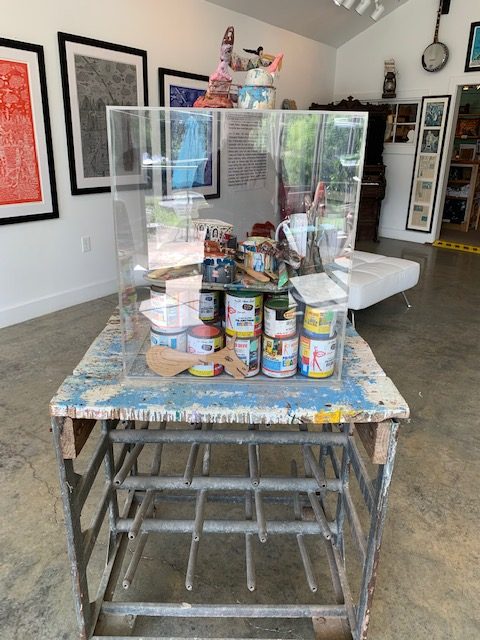
The Museum
It’s a pleasure to walk around and look at the works of someone who seemed as if they were just there. That’s the feel you get when you visit. In the middle of the area there are paint brushes and cans Finster used encased in glass. Almost as if he put them down and someone immediately preserved them. His art is a blend of historical figures like George Washington and Ronald Reagan, pop culture icons Elvis Presley and Marilyn Monroe, animals, aliens, futuristic cities and the list goes on. It’s fascinating.


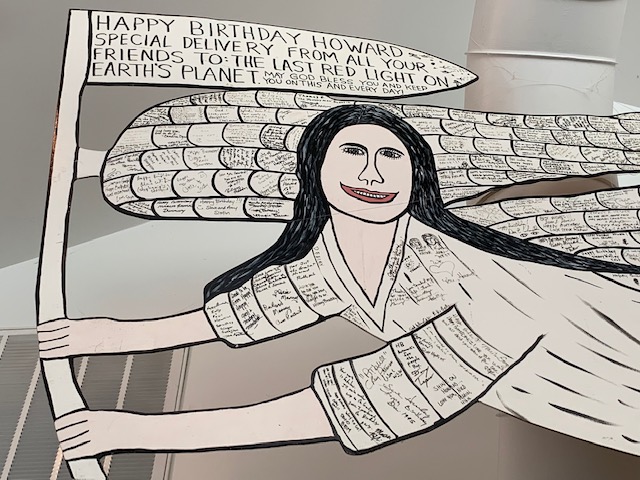
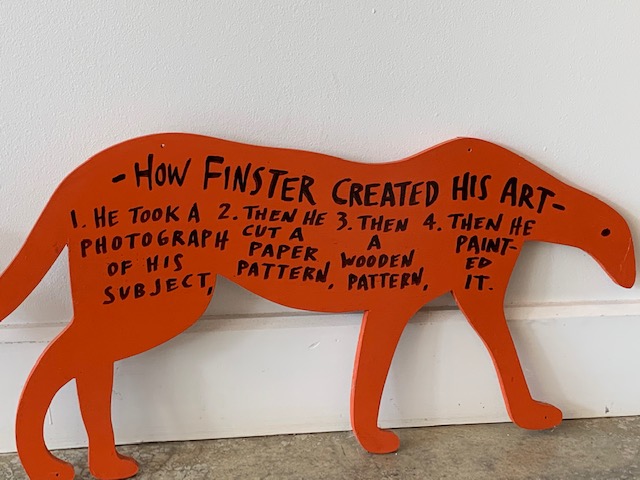
R.E.M. brought publicity to Finster’s work when they recorded their first debut single video “Radio Free Europe” in his garden. He collaborated with Michael Stipe on the artwork for their second album. R.E.M. made an homage to him in their song “Maps and Legends”. Keith Harring, the famous pop culture artist, came down for a visit and helped move an iconic Coca Cola piece to get it ready to go to Atlanta’s High Museum. Finster enjoyed sharing his work and saw it as a way to spread bible verses further into the world.
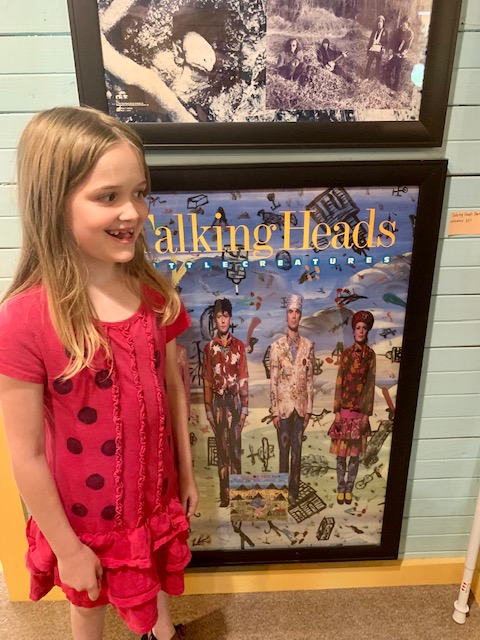
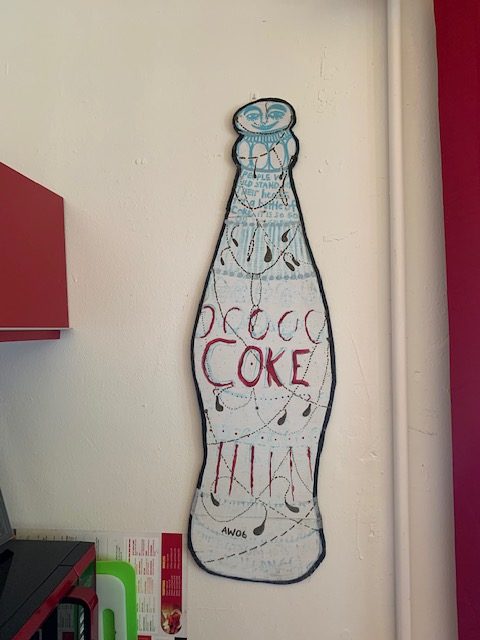
The Gift Shop
Even in the gift shop you can see the little touches Finster left behind. On the front door, there are little clouds he painted inside the door window. There’s a business card wall from visitors who’ve come from all over. It’s nice to still see them. While you’re walking around you can hang out with 2 ginger cats who live on-site – Calvin and Hobbes. They’re friendly and might even escort you around the property as they did with me. Tip: If you rent suite 1 adjacent to the property, then you can let the cats inside to socialize.
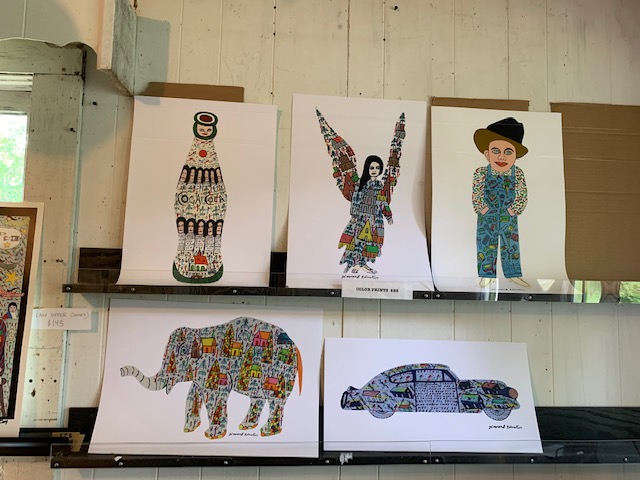
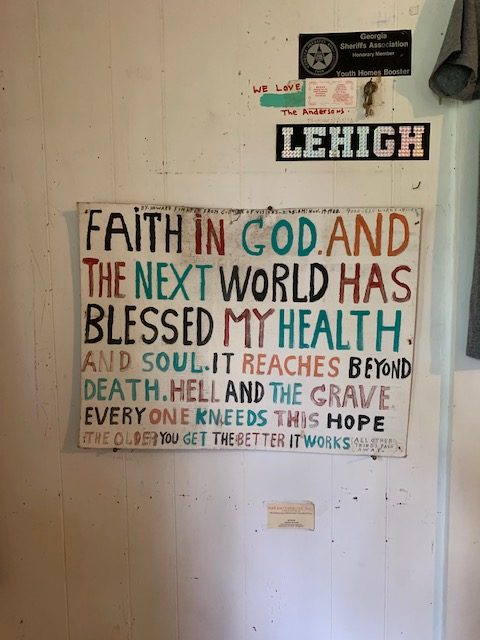

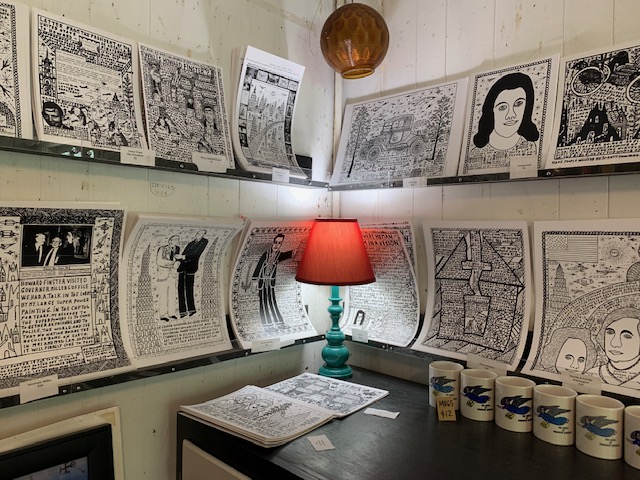


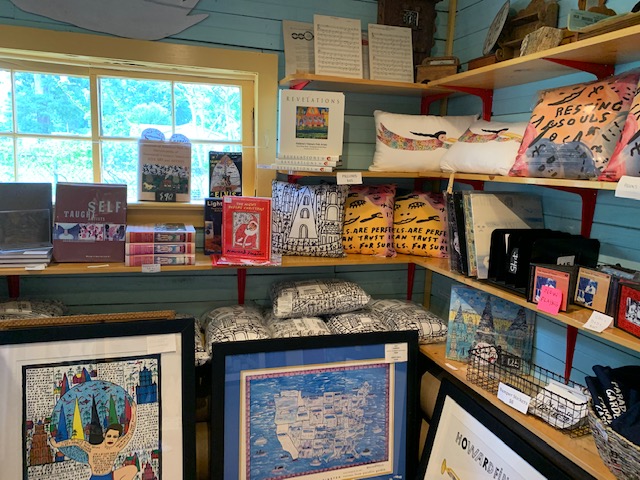

My third and final post about my visit will be the night tour of Paradise Garden. It was thrilling to walk the grounds at night and see the gallery by myself. It will primarily be a pictorial post and we hope you’ll enjoy seeing more of his art.
Check out my first post on where to stay
Marvelous Monday with a Unique Air BnB
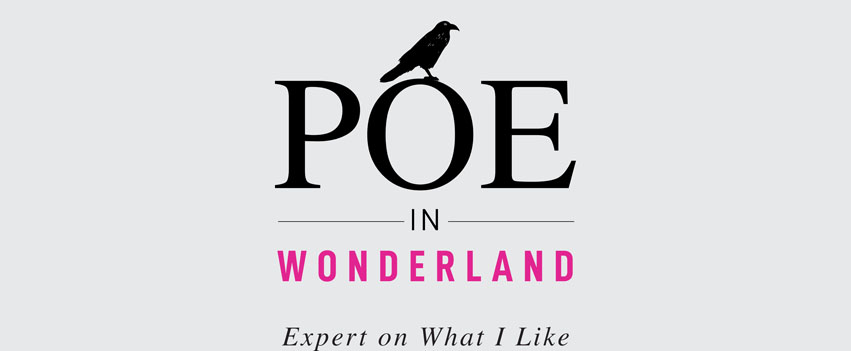
2 Comments
Pingback: Georgia Events to Look Forward to May 13th to 15th - newpoeinwonderland
Pingback: Howard Finster Paradise Garden ts Visits - newpoeinwonderland